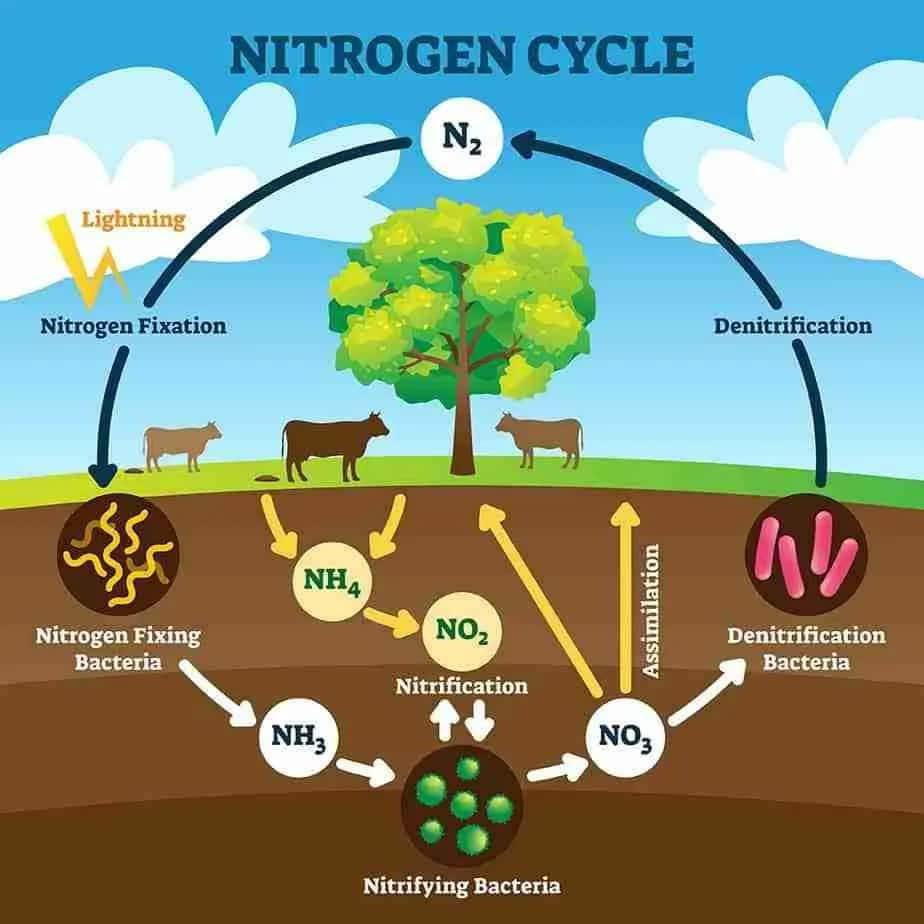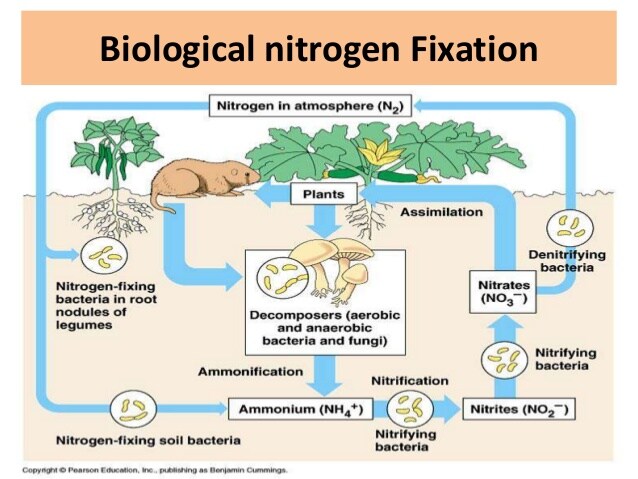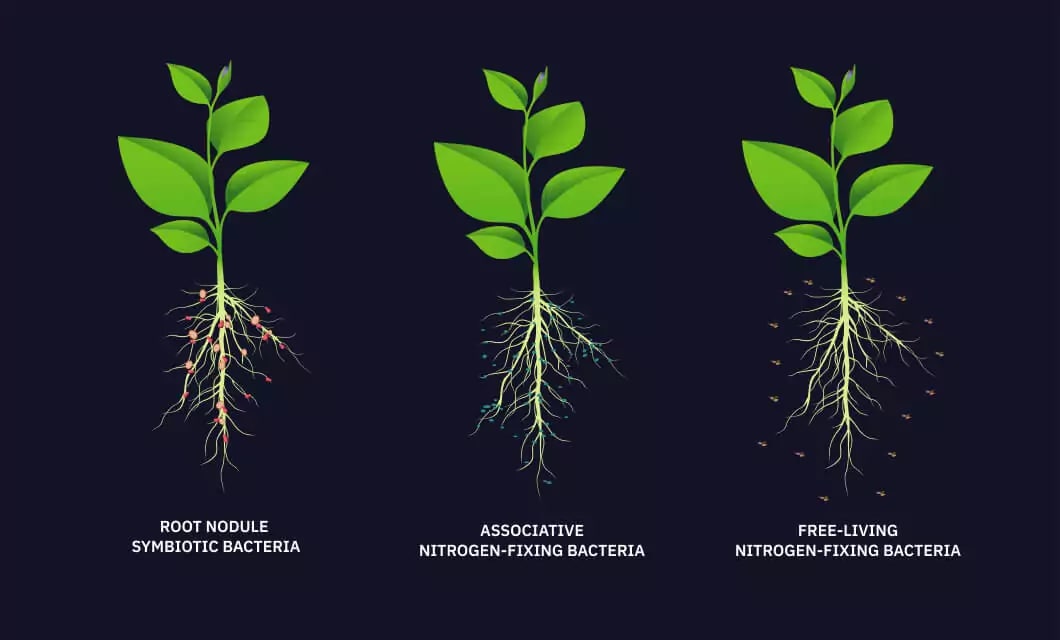Nitrogen Fixation: Definition, Process, Examples, Types, & Facts
Importance Of Nitrogen
Nitrogen is a basic constituent of the makeup of all life on Earth. It is found in amino acids, proteins, enzymes, tissues, and hormones. Nitrogen comprises about 78% of atmospheric gases; however, it needs to be fixed into a form usable by plants. This is a step necessary for the synthesis of proteins, DNA, and other important compounds.
NEET 2025: Mock Test Series | Syllabus | High Scoring Topics | PYQs
NEET Important PYQ's Subject wise: Physics | Chemistry | Biology
New: Meet Careers360 B.Tech/NEET Experts in your City | Book your Seat now

The Nitrogen Cycle
The nitrogen cycle is the biogeochemical process by which nitrogen is changed into its various forms as it circulates through an ecosystem. This cycle, in turn, maintains the nitrogen balance in the environment. Precisely, the important stages of the nitrogen cycle involve:
Nitrogen Fixation: The atmospheric nitrogen, N₂, is converted to ammonia, NH₃.
Nitrification: The ammonia is transformed first into nitrites, NO₂, and then nitrates, NO₃.
Nitrate Assimilation: Plants absorb nitrates to synthesize proteins.
Ammonification: Organic nitrogen gets decomposed into ammonia.
Denitrification: Nitrates are reduced back to atmospheric nitrogen in the air, completing the cycle.

What Is Nitrogen Fixation?
Nitrogen fixation is a chemical process of reformatting inert atmospheric nitrogen either into ammonia or related nitrogenous compounds, making them available to most living organisms. This process is important since nitrogen forms the basis for amino acids, proteins, and nucleic acids. While nitrogen makes up a huge part of the Earth's atmosphere, it needs to be changed into forms usable by plants and, indirectly, the animals that graze on them.

Mechanism Of Biological Nitrogen Fixation
Biological nitrogen fixation is done mainly by a few bacteria having the enzyme nitrogenase. This enzyme catalyzes the conversion of nitrogen gas to ammonia according to the following equation:
N2+8H++8e−+16ATP→2NH3+H2+16ADP+16Pi
in this reaction, atmospheric nitrogen reacts with protons and electrons in the presence of ATP, which generates ammonia.
Types of Nitrogen-Fixing Bacteria
There are two major divisions regarding nitrogen-fixing bacteria:
Symbiotic Nitrogen-Fixing Bacteria:
These bacteria are known to form symbiotic relationships with certain plants, especially legumes. Probably the most well-known example is Rhizobium, which infects the root hairs of leguminous plants and induces the formation of root nodules. Inside these nodules, the bacteria fix atmospheric nitrogen into ammonia, which is used by the plant for growth. In turn, the plant provides the bacteria with carbohydrates and a safe environment.
Non-Symbiotic Nitrogen-Fixing Bacteria
These bacteria do not associate with the plant and live freely in the soil. Examples include Azotobacter and Clostridium. They, too, fix atmospheric nitrogen and increase the amount of nitrogen available to plants in the soil.

The Role of Legumes in Nitrogen Fixation
Leguminous plants have a symbiotic relationship with nitrogen-fixing bacteria; hence, they are involved in nitrogen fixation. The formation of nodules on the roots allows for effective Nitrogen uptake, hence the reason why legumes are included in crop rotation and sustainable agriculture. When legumes are planted, it enhances the natural amount of nitrogen in the soil, which means farmers do not need synthetic fertilizer to raise plants.
Factors that Affect Nitrogen Fixation
Several factors will determine how effective nitrogen fixation will be. Some of the factors include:
Soil pH: This should be within ideal levels, usually between 6.0 and 7.5, to ensure optimum activity of the bacteria.
Moisture Levels: It must have adequate moisture to help the bacteria thrive and the biochemical process ensues accordingly.
Temperature: Nitrogen-fixing bacteria need specific temperatures to attain their optimum activity.
Nutrient Availability: Availability of other nutrients can impact the whole health status of the plant or its ability to support nitrogen-fixing bacteria.
Recommended video on Nitrogen Fixation
Frequently Asked Questions (FAQs)
Nitrogen fixation is the process of taking atmospheric nitrogen, N₂ and reducing it to ammonia or related nitrogenous compounds that the plant can use.
Nitrogen is needed for amino acids, proteins, and nucleic acids, and therefore for all growth and developmental processes of plants. There are two broad groups of nitrogen-fixing bacteria. The two main kinds include symbiotic bacteria that associate to form symbiotic relationships with plants, for instance, Rhizobium and non-symbiotic bacteria that free-float in soil, for example, Azotobacter.
The legume associates symbiotically with nitrogen-fixing bacteria, which enables the plants to convert atmospheric nitrogen into ammonia for their growth and to enhance the nitrogen conditions of the soil.
These include soil pH, soil moisture, temperature, and other nutrients that are all implicated in influencing the activity of nitrogen-fixing bacteria.
Also Read
30 Sep'24 09:24 AM
18 Sep'24 06:01 PM
18 Sep'24 03:37 PM
26 Aug'24 03:39 PM
26 Aug'24 03:32 PM
26 Aug'24 03:31 PM
26 Aug'24 03:27 PM
26 Aug'24 03:22 PM
26 Aug'24 03:10 PM
26 Aug'24 03:03 PM